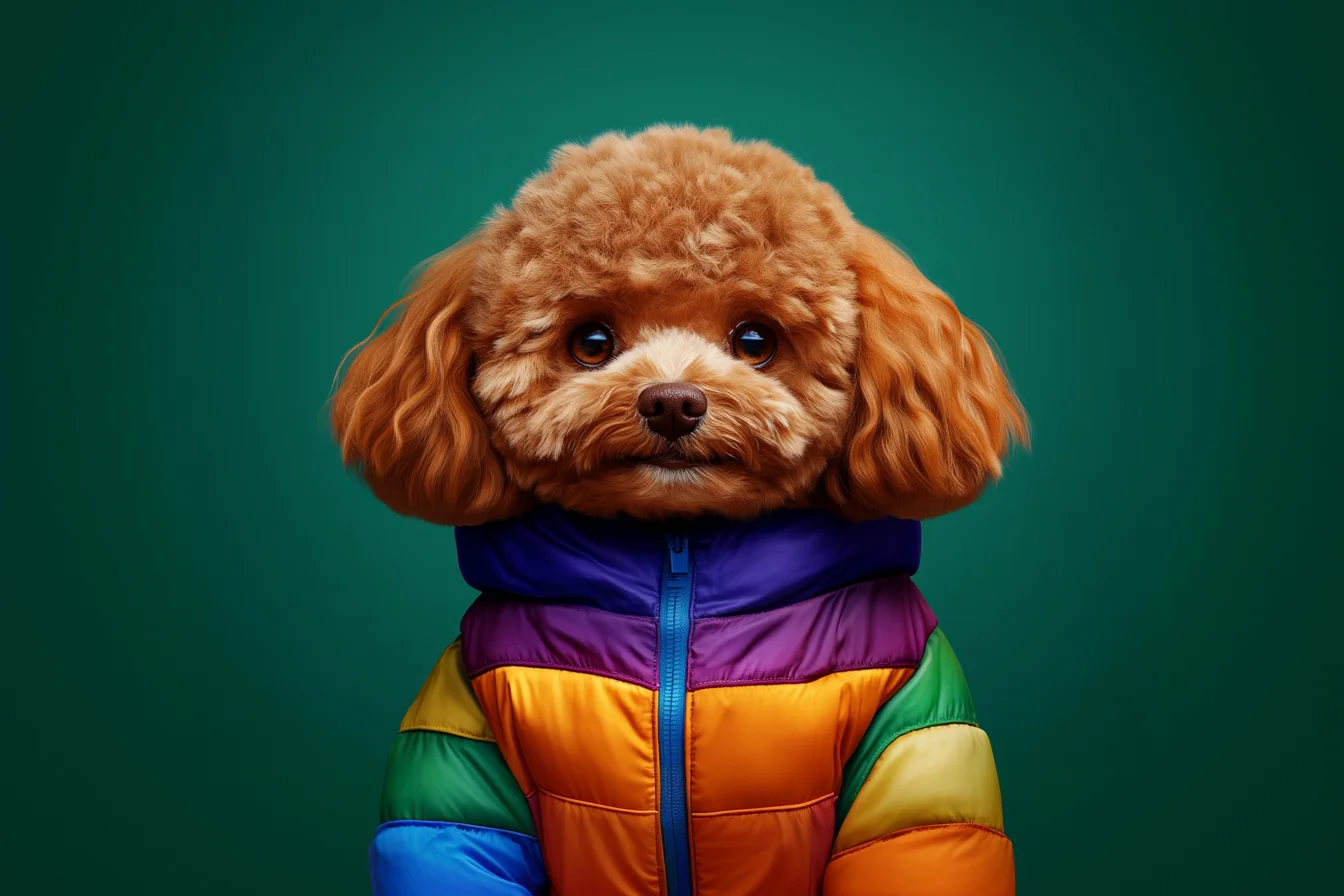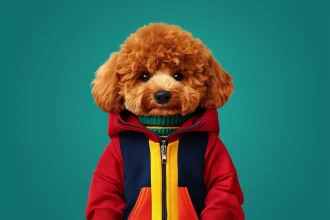“But the breeder said she’d be perfect for hiking!” One of my clients laughs as her tiny Toy Cavapoo, Mabel, dramatically flops onto her plush bed after a modest 15-minute walk. This scene perfectly captures why I decided to write this guide. As a professional dog walker, I’ve watched countless families fall in love with the idea of a Toy Cavapoo, only to face some surprising realities once they bring one home.
Don’t get me wrong – these pint-sized pups can make incredible companions. But between the Instagram-perfect photos and the “perfect family dog” marketing, there’s a lot that potential owners need to know. After working with dozens of these adorable little dogs, I’ve collected plenty of insights about what really works (and what doesn’t) when it comes to Toy Cavapoo ownership.
This guide cuts through the fluff to give you the real story – from their genuine exercise needs to the true cost of maintaining that teddy bear coat. Whether you’re seriously considering a Toy Cavapoo or just starting your research, I’ll share what I’ve learned from countless hours with these charming little characters.
Bottom Line Upfront
- They’re significantly smaller than standard Cavapoos – expect 7-12 pounds max.
- Not suited for rough play or intense exercise. These are gentle companion dogs, not miniature sporting breeds.
- Extremely people-oriented: they thrive on attention and can struggle with alone time. Work-from-home families see the best success.
- That cute teddy bear look requires serious maintenance – plan for regular professional grooming and daily home care.
- Wonderful for apartment living and calm households, but can be too delicate for families with toddlers or very active children.
What is a Toy Cavapoo?
Meet Max, one of my regular clients. When people stop us on walks to ask what kind of dog he is, I sometimes joke that he’s basically a living teddy bear. But technically, a Toy Cavapoo is a deliberately bred mix between a Cavalier King Charles Spaniel and a Toy Poodle (not to be confused with their larger cousins, who come from Miniature or Standard Poodles).
Understanding generations matters when choosing a Toy Cavapoo. My clients often ask why siblings from the same breeder can look so different. Here’s why:
- F1 (First Generation): 50/50 split between Cavalier and Toy Poodle. These pups can vary wildly in appearance – I walk two F1 siblings who look nothing alike.
- F1b: An F1 Cavapoo bred back to a Toy Poodle (75% Poodle, 25% Cavalier). Usually more consistently curly-coated.
- F2 and beyond: Cavapoo-to-Cavapoo breeding. These can be a real genetic grab bag of traits.
Physical Characteristics
“Are you sure he’s full grown?” I hear this question constantly about Oliver, my 7-pound Toy Cavapoo client. Yes, he is – and his size is perfectly normal for the breed. Let’s break down what to really expect:
- Most adults weigh 7-12 pounds
- Stand 9-12 inches at the shoulder
- Females typically run slightly smaller
- Full size usually reached by 8-9 months
The coat is where things get interesting. I currently walk six Toy Cavapoos, and each has a distinctly different coat:
- Wavy and silky
- Tight curls (think miniature Poodle)
- Straight with slight waves
- Colors range from solid cream to complex parti patterns
About that “hypoallergenic” claim: Let’s be real. While Toy Cavapoos typically shed less than many breeds, they’re not allergy-proof. My client Emma is allergic to most dogs but does fine with her Toy Cavapoo. Her neighbor tried the same breed and still had reactions. When breeders say “hypoallergenic,” think “less likely to trigger allergies” rather than “allergy-free.”
Temperament and Personality of Toy Cavapoo
Remember that viral video of the tiny dog insisting on following its owner everywhere, even to the bathroom? That’s Toy Cavapoo energy in a nutshell. These dogs take “velcro” to a whole new level.
My client’s Toy Cavapoo, Bella, has mastered the art of the “laptop bridge” – somehow squeezing herself between the screen and keyboard during work calls. While adorable, this highlights their intense need for connection. These dogs aren’t just friendly; they’re absolutely convinced they’re the main character in your life story.
When it comes to personality, I’ve found these pups are deeply attached to their people, sometimes to a fault. They possess a gentle, sweet nature that makes them wonderful companions, and they’re surprisingly clever when treats are involved. Most get along beautifully with other pets, though they can be timid around loud noises or sudden movements.
As for behavioral tendencies, watch out for separation anxiety if proper training isn’t established early. Some can develop “small dog syndrome” without clear boundaries, and many master the art of selective hearing when something more interesting catches their attention. They also go through fear periods that need gentle, patient handling.
Exercise and Activity Needs
Let’s bust a myth right away: Toy Cavapoos don’t need marathon training sessions. What they do need is consistent, appropriate exercise that doesn’t overwhelm their small frames.
Here’s what works for most Toy Cavapoos I walk:
- 2-3 short walks daily (15-20 minutes each)
- Indoor play sessions between walks
- Mental stimulation games
- Regular but gentle social interactions
A typical exercise day should be broken into manageable chunks. Morning starts with a quick potty walk plus 10 minutes of fetch. The afternoon sees a 15-minute neighborhood stroll, followed by an evening short walk and indoor playtime.
When the weather turns challenging, my clients have developed creative alternatives. Indoor agility courses using household items keep their pups engaged, while hide-and-seek with treats provides both mental and physical stimulation. Puzzle toys during meal times make eating an activity, and gentle tug-of-war sessions burn energy safely.
One creative solution I love came from my client who turned her hallway into a “chase track” using a feather wand toy. Her Toy Cavapoo gets plenty of exercise even on stormy days.
A word of caution about exercise intensity: These aren’t mini athletes. My client learned this the hard way when her Toy Cavapoo needed rest for a week after an overly ambitious hike. Start slow and watch for signs of fatigue – they’ll usually let you know by simply sitting down and refusing to move!
Maintenance and Care
Let’s talk about that adorable teddy bear look – it doesn’t happen by accident. One of my clients thought she could skip professional grooming and just “keep up with brushing at home.” Three months later, I walked into their house to find her desperately trying to untangle what looked like a walking dust bunny.
A realistic grooming schedule for a Toy Cavapoo looks like this: daily quick brush-outs (yes, daily), thorough brushing sessions twice a week, and professional grooming every 6-8 weeks. That professional grooming isn’t cheap either – expect to pay between $75-120 per session. My most organized client keeps a “grooming station” by her TV and brushes her pup during evening shows.
Beyond grooming, these little ones need consistent maintenance to stay healthy. Their small mouths are prone to dental issues – one of my clients learned this the hard way with a $2,000 dental bill. Most vets recommend annual cleanings starting early. Those adorable floppy ears need weekly cleaning to prevent infections, and their eyes need regular wiping to prevent staining.
Training and Socialization
Early socialization is crucial. My favorite success story is little Winston, who started puppy classes at 10 weeks old. His owner was diligent about exposing him to different people, sounds, and experiences during his critical socialization period (8-16 weeks). Now he’s the most confident Toy Cavapoo I walk, without worrying about the skateboards, children, or even those terrifying delivery trucks.
“He’s so small and cute, does he really need training?”
I hear this question constantly, and my answer is always the same: small dogs need training just as much as big ones – maybe even more so.
The key to training these sensitive souls is positive reinforcement. Harsh corrections can damage their confidence. They’re smart and eager to please, but they need gentle guidance. Basic obedience training isn’t expensive – group classes run about $120-150 for a six-week course, and the socialization alone is worth the price.
Common training challenges include house training (those tiny bladders need frequent breaks), leash manners (they’re surprisingly strong pullers for their size), and the dreaded separation anxiety. The most successful owners start teaching independence from day one.
Living with a Toy Cavapoo
“Will my Toy Cavapoo be happy in my small apartment?” This might be the most common question I get, and the answer is usually yes – with some caveats.
These dogs are incredibly adaptable. Take my client’s pup in her 600-square-foot studio – he’s living his best life because she’s created clever spaces for him. A window perch for watching the world go by, a designated play area, and a cozy crate setup make the small space work perfectly. Meanwhile, another client’s Toy Cavapoo thrives in a large house but spends 90% of their time in whatever room their human occupies.
Space matters less than your lifestyle. These dogs excel in any setting where they get plenty of attention and appropriate exercise. What they won’t tolerate well is long periods alone, regardless of your home size. I’ve seen successful setups in everything from tiny apartments to sprawling houses, but the common denominator is always an owner who can provide consistent companionship.
Weather considerations do impact daily life with these small dogs. A good gear collection is essential – we’re talking waterproof jackets for rain, booties for hot pavement (and cold days), and warm sweaters for chilly mornings. My favorite client setup includes a covered potty area on their patio and a dedicated drying station by the door, complete with towels and paw wipes.
Is a Toy Cavapoo Right for You?
I’ve learned that matching the right dog to the right owner matters more than any breed-specific traits. Here’s what the most successful Toy Cavapoo owners have in common.
You’ll likely thrive with a Toy Cavapoo if your life already includes plenty of home time. My happiest client pairs are remote workers, retirees, or families where someone is usually home. These dogs bond deeply and do best with consistent companionship throughout the day.
The ideal owner also comes with a healthy dose of patience and a regular schedule. Take my client Lisa – she built her freelance writing career around her pup’s routine, including regular breaks for short walks and play sessions. Her Toy Cavapoo flourishes because she understood from day one that these dogs need structure as much as they need love.
A realistic budget is non-negotiable. Beyond the initial purchase price, you’re looking at regular grooming appointments, quality food, preventative vet care, and the occasional fashion statement (yes, your dog will probably have a better wardrobe than you).
But maybe most importantly, you should genuinely enjoy having a shadow. If you’re someone who needs a lot of personal space or gets annoyed by constant companionship, this isn’t your breed. These dogs want to be involved in everything you do – from cooking dinner to taking a shower.
Consider different options if:
- You work long hours away from home and can’t arrange for midday visits
- Your lifestyle involves lots of high-intensity outdoor activities
- You’re looking for a low-maintenance, independent pet
- You have very young children who might play too roughly
- Budget constraints make regular grooming and vet care challenging
Ultimately, the right dog for you is the one that fits naturally into your existing lifestyle, not one that requires you to completely restructure your life. While Toy Cavapoos are wonderful dogs, they’re not for everyone – and that’s perfectly okay.
FAQs
Consider health testing results first. F1s have more balanced traits from both parents with greater hybrid vigor, while F1bs are more predictable in coat type. F1s might shed more but often have fewer health issues. F1bs typically have curlier, more hypoallergenic coats but need more grooming.
A reputable breeder performs health screening on both Cavalier and Toy Poodle parents, provides documentation, allows home visits, and asks you detailed questions. They have a clear contract, offer health guarantees, and won’t pressure quick sales. Expect a waitlist and transparent pricing.
Toy Cavapoos excel in apartments due to their moderate exercise needs and adaptable nature. They’re typically quieter than many small breeds and more trainable, but require more grooming than breeds like Pugs. Their strong attachment needs mean they prefer constant companionship.
Essential preparations include a designated grooming station with professional tools, secure playpen area, multiple beds throughout your home, enrichment toys for mental stimulation, and scheduled vet and groomer appointments. Also arrange your schedule for frequent potty breaks and establish a consistent daily routine.
While their small bladder size requires frequent breaks, Toy Cavapoos are intelligent and respond well to consistent training. Success depends on establishing a strict schedule, using positive reinforcement, and limiting house access during training. Most master housebreaking within 3-4 months.
Begin socialization in controlled environments with positive associations. Introduce new experiences gradually from a comfortable distance. Focus on quality interactions over quantity and always let your dog set the pace. Reward calm behavior and create positive associations with new experiences.













